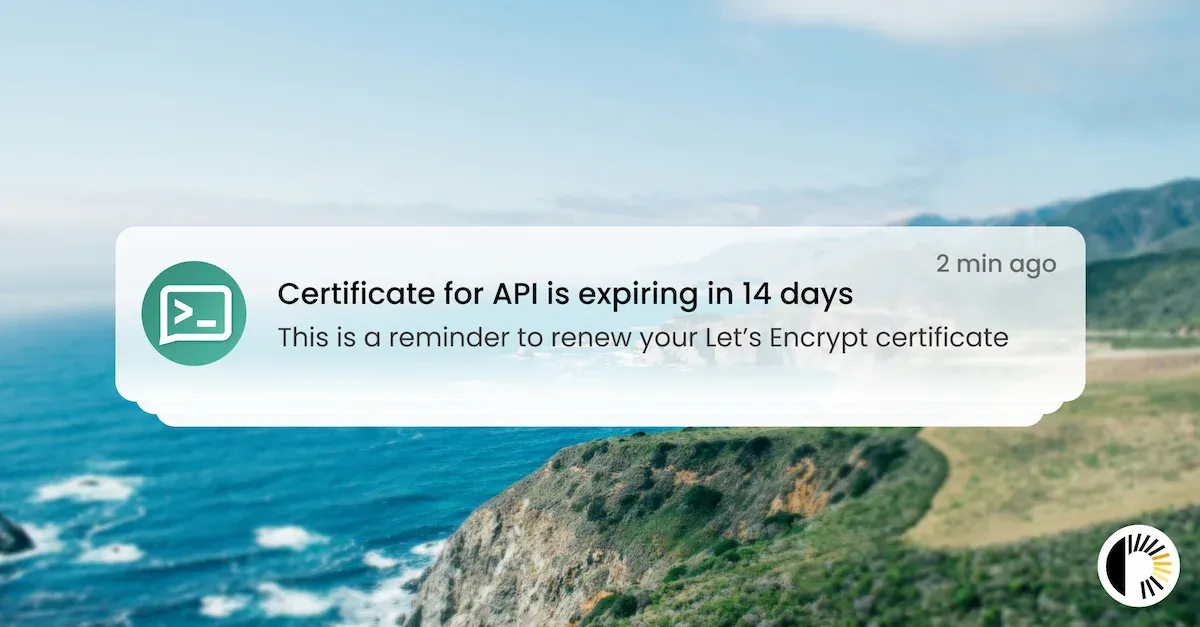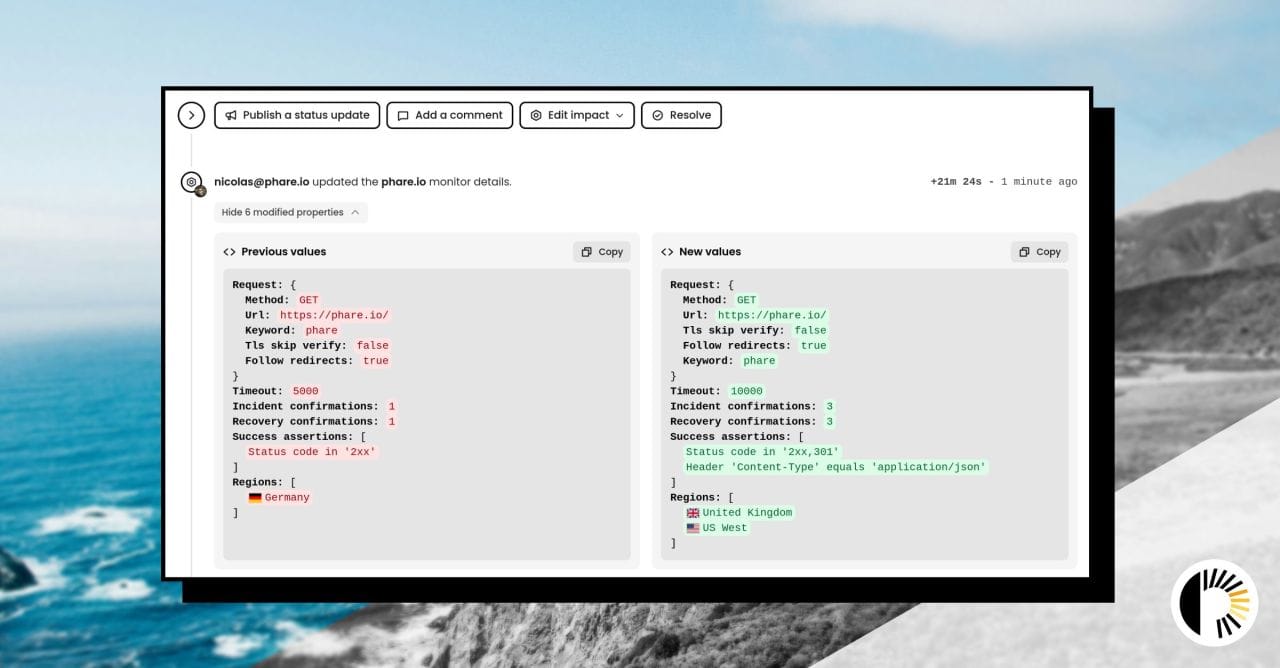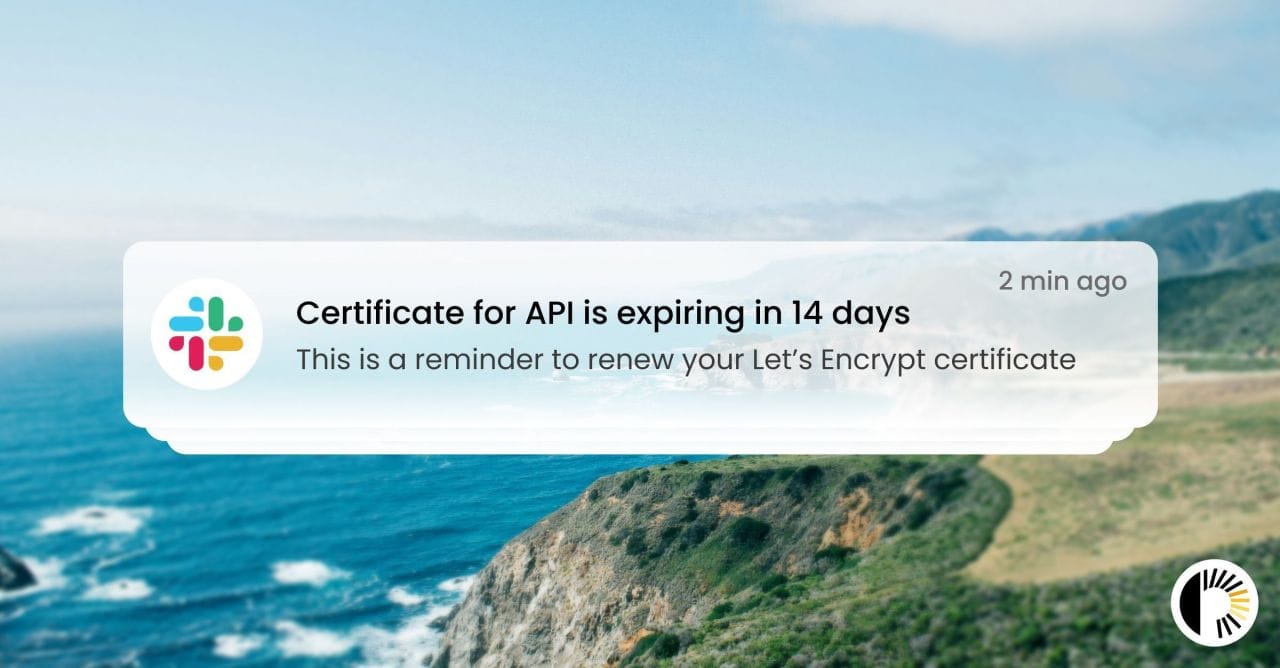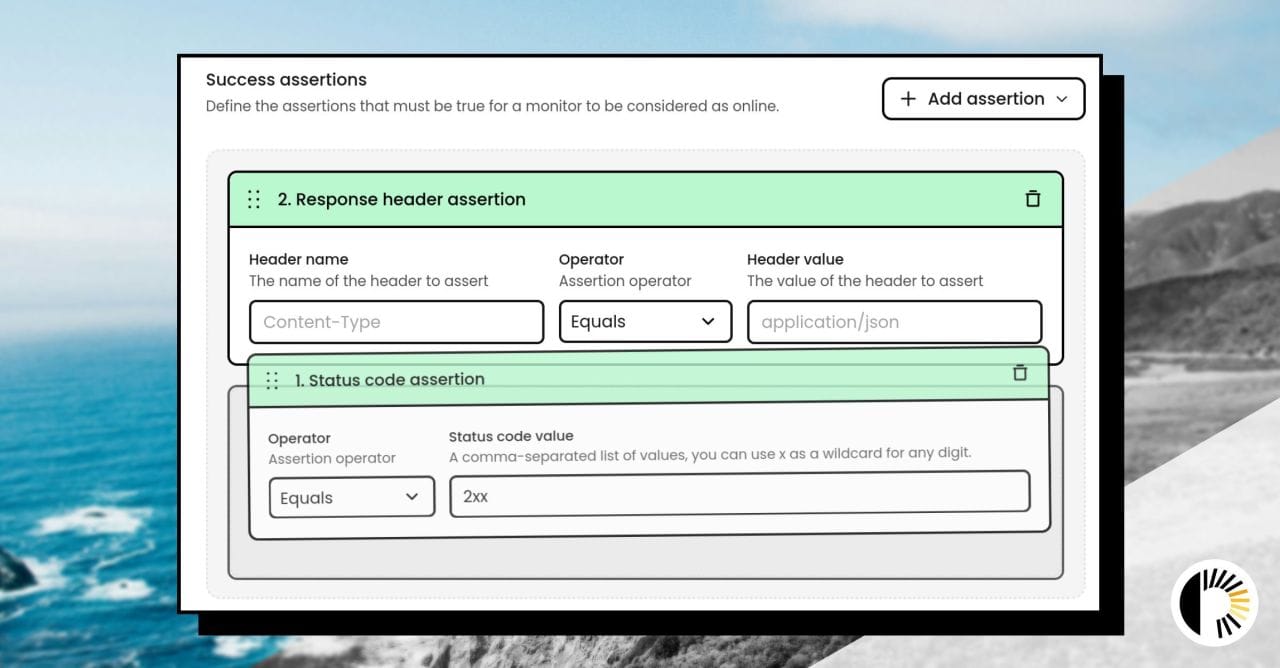The BEAM #2
Discover Phare's latest updates in The Beam #2: Incident AI, merging, notification threads, certificate monitoring and much more...
Hey there 👋
After six packed months without an update, it's time for The Beam to give you an overview of what you might have missed.
🤖 Incident AI

Phare now comes with Incident AI, generating automatic summaries and post-mortems so you don’t waste time writing reports after every outage.
It’s powered by Mistral’s Magistral small, an open-source, efficient model, and can be configured per project.
Learn more about the AI implementation.
🔄 Smart Incident Merging
Related issues are now merged into one larger incident, reducing alert noise and keeping your focus sharp. You can also create incidents that cover multiple monitors at once, helping you understand when multiple systems fail for the same root cause, and keep your status page in sync.
📬 Notification threads

Notifications across Slack, Discord, and Email now live inside threads, keeping your channels clean and conversations focused. There’s also a new ntfy.sh integration for those who love self-hosted, open-source notifications, and you can now filter alert rules by incident type for precision.
🧷 Enhanced Incident Timeline

The updated timeline shows monitor changes, incident updates, and API actions during the event, so you always know who did what and when. Incident details have been expanded too, including response metadata, headers, and trace info for faster debugging.
🔧 Monitoring Upgrades & Compression

Phare’s monitoring got serious upgrades, with support for Brotli and Zstandard compression, custom HTTP headers, and the ability to send POST, PUT, or PATCH requests with bodies for API testing. You can monitor TLS over TCP, skip SSL validation for self-signed certs, and even fail on redirects for stricter uptime rules.
🛡️ SSL / Certificate Tracking & Alerts

SSL tracking is now built-in. Phare automatically discovers and monitors certificates, warning you before they expire or when a new one is detected. You’ll know about SSL issues before your users do, exactly how it should be.
💡 Success Assertions

With success assertions, you can verify status codes, headers, or specific text in responses. No more false positives, your monitors now know what “healthy” really means.
Thank you for being part of the journey. Evolving Phare is a lot of work, and your support is what keeps it all moving.
Let me know if you liked this edition of The Beam.
Nicolas,
Founder of Phare.io
